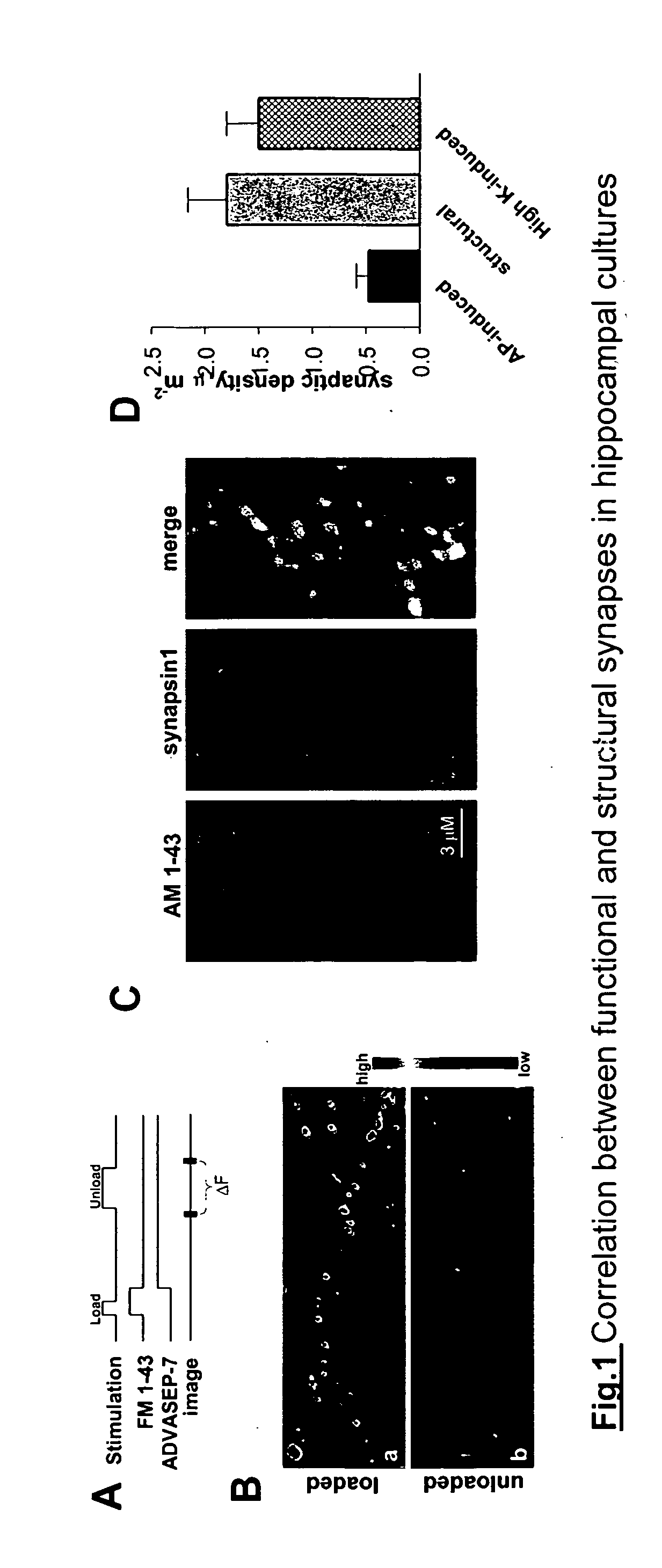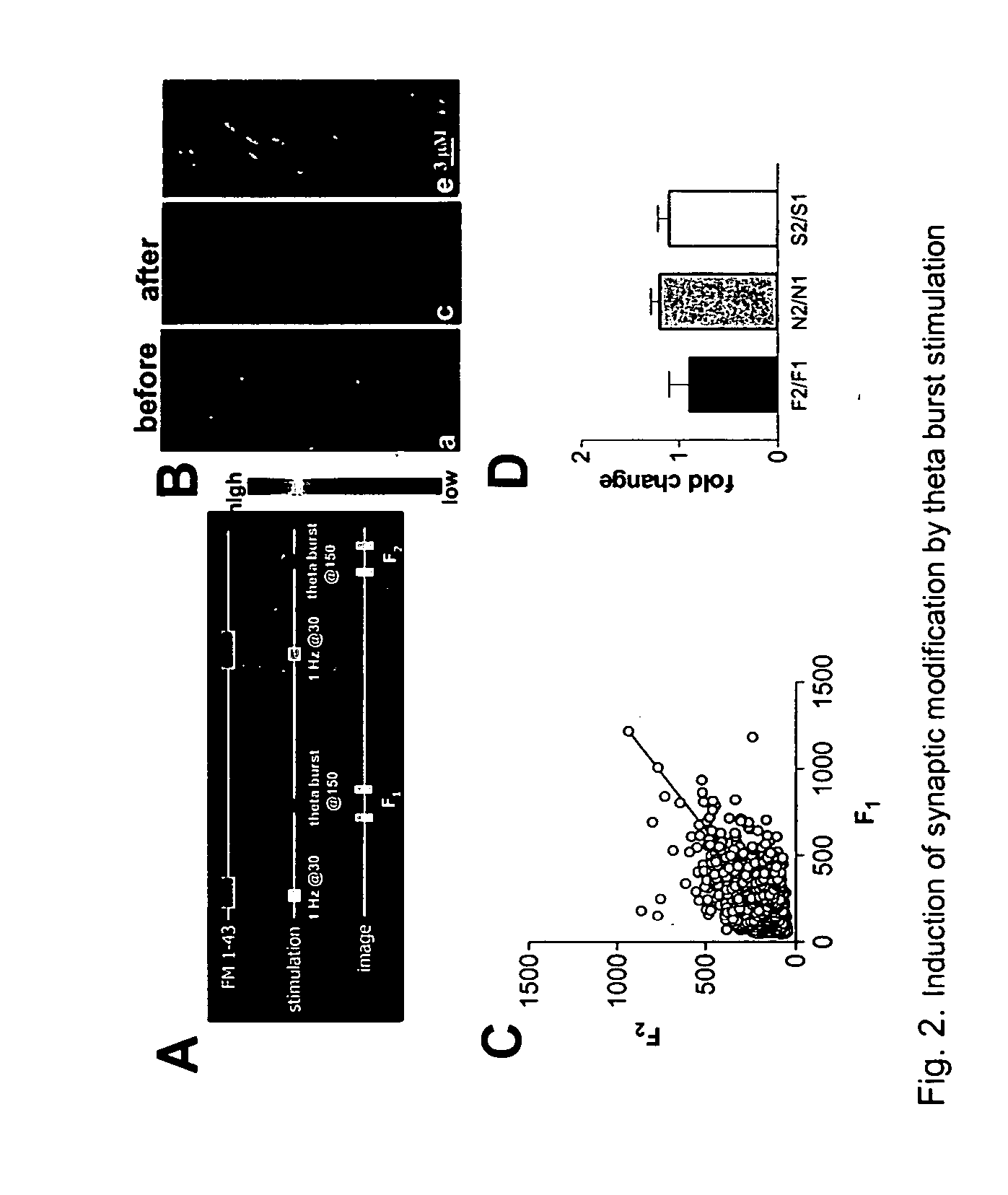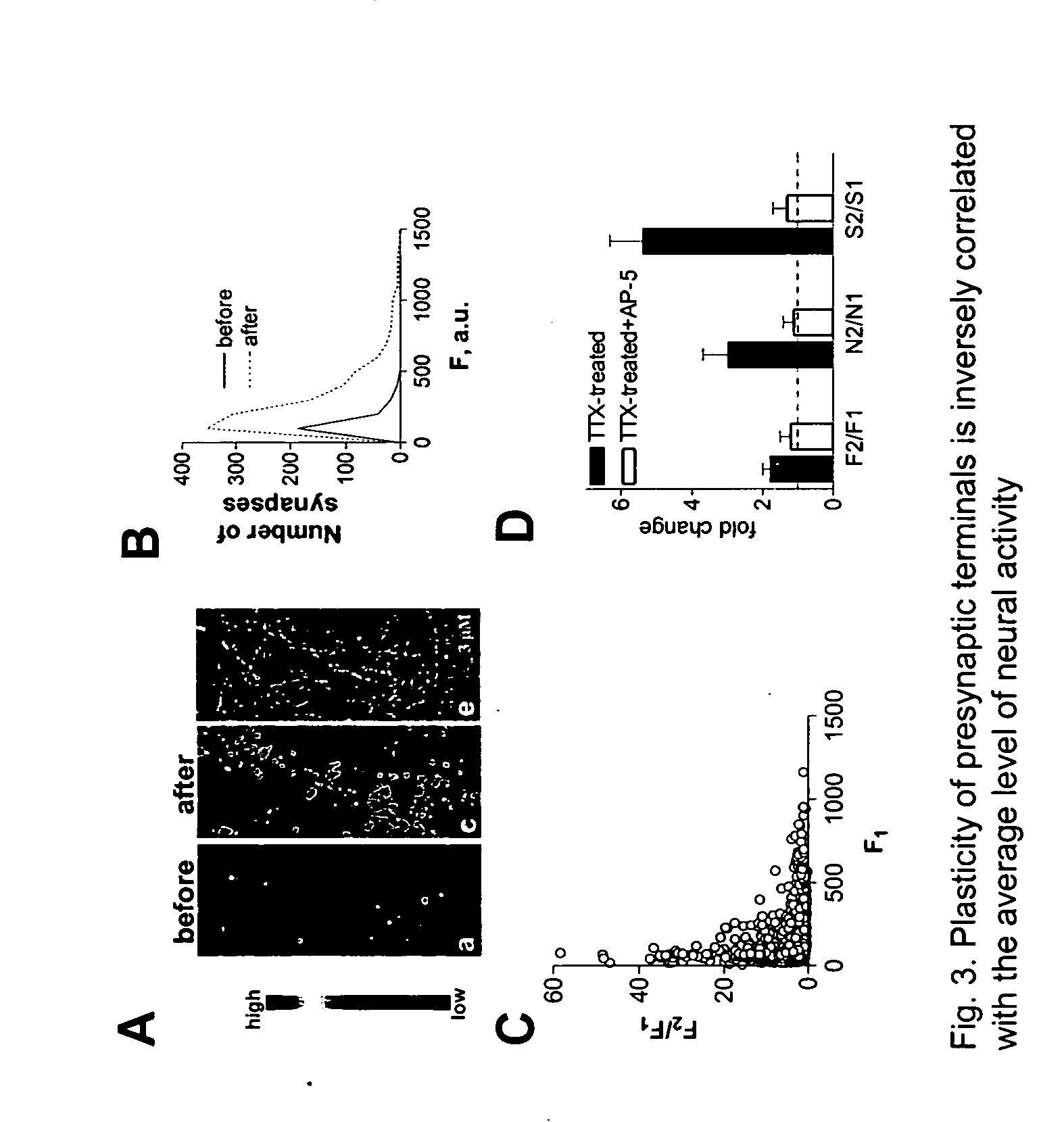Compositions and methods for enhancing cognitive function and synaptic plasticity
- Summary
- Abstract
- Description
- Claims
- Application Information
AI Technical Summary
Benefits of technology
Problems solved by technology
Method used
Image
Examples
example 1
Detection of Presynaptic Function Using FM Dye Staining
[0191] Materials and Methods
[0192] Cover Slip Method for Postnatal Rat Hippocampal Neuron Culture
The protocol below describes culture methods used for all examples except as otherwise noted.
Solutions:
Basic Medium: MEM, Gibco 51200-038 (No phenol red)
[0193] 500 ml of MEM [0194] 2.5 g glucose [0195] 100 mg NaHCO3 [0196] 50 mg transferrin, Calbiochem 616420
filter-sterilize. Store at 4° C.
Plating Medium: On the day of use take 89 ml of the above MEM / Basic Medium and add: [0197] 30 mg glutamine [1 ml 0.2 M glutamine stock / 100 ml medium, store glutamine at −20° C.][0198] 2.5 mg insulin Sigma 15500 [0.2 ml of insulin stock (12.5 mg insulin / 1 ml 10 mM HCl) / 100 ml medium, store insulin at −20° C.][0199] 10 ml fetal bovine serum (FBS) [if not done, heat inactivate serum at 57° C. for 30 min., stored at 4° C.]
Filter-sterilize. For 15 plates, equilibrate about 35 ml of medium in incubator (37° C., 5% CO2)
Feeding medium: Make...
example 2
Identification of Functionally Silent Presynaptic Terminals in Neural Networks
[0239] Materials and Methods
[0240] Culture of hippocampal neurons, electrophysiology, and dye loading, synapsin staining, and image analysis were performed as above except that AM 1-43, a new fixable variant of FM 1-43 was used. For dye loading, 30 action potentials (AP) were applied at 1 AP / sec.
[0241] Immunohistochemistry. Following functional FM 1-43 staining, neurons were fixed by flooding the perfusion chamber with a fixative FSB solution consisting of 4% paraformaldehyde and 4% sucrose in 1×PBS for 30 minutes and permeabilized with 0.5% Triton X-100. Primary antibodies against VGLUT1 (Chemicon International), and GAD-65 (Chemicon International) were applied for 8 hours, followed by rinses in PBS and staining with Alexa 488- and 633-conjugated secondary antibodies ( 1 / 400; Molecular Probes, Eugene, Oreg.) at 22-24° C. All images were collected at 1024×1024 pixels with a 0.069 μm / pixel resolution. 11...
example 3
Inability to Convert Silent Synaptic Terminals to Functional Terminals with Theta-Burst Stimulation
[0247] Materials and Methods
[0248] These were generally as described in Example 1. For theta-burst stimulation, each burst contains 5 action potentials with 40 ms interval. 30 bursts were delivered, the burst interval was 500 ms.
[0249] Results
[0250] The presence of silent synaptic terminals within neural networks provides a great potential to up-regulate the strength of their synaptic connections rapidly. Thus, we are interested in whether these silent synaptic terminals can be converted to functional ones by patterns of synaptic activity. To test this possibility, we checked whether the up-regulation of the Pr of synaptic terminals could be induced by theta-burst stimulation (TBS), a plasticity induction method that is believed to replicate neural activity in vivo (Bliss and Collingridge, 1993). The induction-associated changes in Pr of synaptic terminals were determined by compar...
PUM
| Property | Measurement | Unit |
|---|---|---|
| Time | aaaaa | aaaaa |
| Time | aaaaa | aaaaa |
| Time | aaaaa | aaaaa |
Abstract
Description
Claims
Application Information
 Login to View More
Login to View More - R&D
- Intellectual Property
- Life Sciences
- Materials
- Tech Scout
- Unparalleled Data Quality
- Higher Quality Content
- 60% Fewer Hallucinations
Browse by: Latest US Patents, China's latest patents, Technical Efficacy Thesaurus, Application Domain, Technology Topic, Popular Technical Reports.
© 2025 PatSnap. All rights reserved.Legal|Privacy policy|Modern Slavery Act Transparency Statement|Sitemap|About US| Contact US: help@patsnap.com



